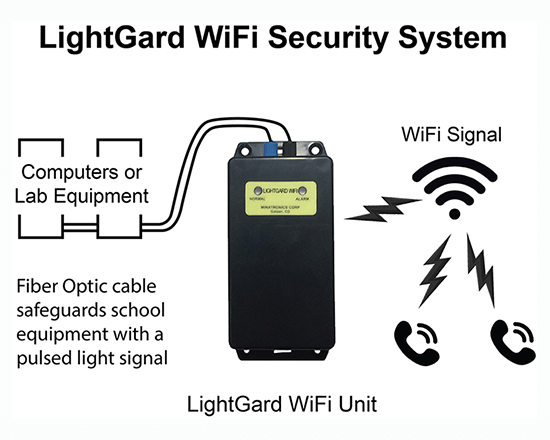Why a Fiber Security System Outperforms Traditional Security Systems
Why a Fiber Security System Outperforms Traditional Security Systems
Blog Article
The Ultimate Overview to Fiber Optic Security Systems for Your Company
In an era where safety and security worries are vital for organizations, understanding the ins and outs of fiber optic modern technology can be transformative. This overview outlines exactly how incorporating fiber optic security systems not only boosts data protection however additionally uses advantages like resistance to interference and real-time monitoring capacities. As organizations evaluate their protection needs, it becomes crucial to consider the installment process and the most recent developments in the area. What specific variables should be prioritized when picking the ideal system, and exactly how can companies ensure they make one of the most educated choices?
Understanding Fiber Optic Technology

The core of a fiber optic cable is composed of a slim glass or plastic center, surrounded by a cladding layer that mirrors light back right into the core. fiber optic security system. This layout makes sure marginal loss of signal toughness, even over considerable distances. There are two main sorts of fiber optic cables: single-mode and multi-mode. Single-mode fibers are developed for long-distance transmission, while multi-mode fibers are suitable for shorter ranges, commonly used within structures.
Optical fiber are not just quicker but additionally much more secure than traditional circuitry. Their intrinsic resistance to electro-magnetic interference and the difficulty of tapping into the signal without discovery make them a preferred selection for companies focusing on information stability and safety. As organizations significantly count on secure and reliable interaction systems, comprehending fiber optic innovation comes to be necessary for informed decision-making.
Secret Benefits of Fiber Optic Safety And Security
When considering security options for a service, the benefits of fiber optic systems are especially engaging. First and leading, fiber optic innovation supplies phenomenal information transmission rates and data transfer capacity, making it ideal for taking care of high-resolution video feeds from monitoring video cameras. This capability ensures that security workers obtain real-time data, improving total response times to possible protection threats.
In addition, fiber optic cable televisions are inherently immune to electromagnetic disturbance, which can endanger the integrity of typical copper-based systems. This resistance guarantees that the information transferred remains protected and undisturbed, supplying a more reputable protection framework. Furthermore, optical fiber are much less vulnerable to physical damages, as they are made from glass as opposed to metal, minimizing maintenance costs and downtime.
Fiber optic systems supply improved cybersecurity functions, including security capacities that shield sensitive information from unauthorized gain access to. Jointly, these benefits make fiber optic safety and security systems a durable choice for organizations looking for to enhance their protection procedures.
Installment Process and Factors To Consider
Considering the complexities involved, the installation procedure of fiber optic protection systems calls for mindful planning and execution. The initial action involves a thorough website analysis to identify optimal areas for cabling and devices. This analysis should think about environmental variables, existing facilities, and possible susceptabilities.

In addition, the installation has to abide by local structure codes and market requirements. This may include coordinating with various stakeholders such as building managers, IT groups, and security workers to make certain smooth assimilation with existing systems.
Post-installation, strenuous testing is required to verify system performance and determine any type of problems that may emerge. By prioritizing these factors to consider during the setup procedure, organizations can make certain a robust and efficient fiber optic security system that fulfills their details safety and security needs.
Most Current Innovations in Fiber Optic Safety
Recent improvements in over here fiber optic modern technology have actually considerably improved the abilities of safety and security systems for businesses. Among one of the most notable advancements is the combination of fiber optic sensors that can spot resonances and invasions along the perimeter of a facility. These sensing units provide real-time monitoring, enabling fast reaction to prospective violations.
Furthermore, the growth of dispersed fiber optic noticing technology enables the continual monitoring of huge locations with a single fiber cable. This technique not only minimizes installment expenses however also enhances the integrity of monitoring systems by removing the demand for multiple, different sensing units.
Furthermore, innovations in multiplexing techniques have actually allowed businesses to transfer vast quantities of information over fiber optic networks, enhancing the capacities of video clip security systems. High-definition video feeds can now be sent over cross countries without loss of quality, guaranteeing that safety and security personnel have accessibility to clear and actionable details.
Last but not least, making use of expert system (AI) combined with fiber optic systems is reinventing danger discovery. AI formulas can examine data from fiber optic networks to recognize uncommon patterns or actions, permitting proactive protection measures. These innovations jointly stand for a considerable jump forward in fiber optic safety technology.
Selecting the Right System for Your Company
Choosing the suitable fiber optic security system for your service is critical for ensuring optimum protection and comfort. To make an enlightened choice, evaluate your specific safety requirements, thinking about factors such as the dimension of your facilities, the nature of your procedures, and prospective susceptabilities.
Begin by reviewing the level of safety required; for example, risky environments might necessitate sophisticated systems with incorporated surveillance and invasion discovery abilities. Next off, consider scalability; as your organization expands, your protection system should can expanding to accommodate raised needs without significant overhauls.
In addition, examine the dependability and performance of different systems. Seek providers with well-known track records and customer testimonies that confirm to their service high quality. It's also recommended to ask about the innovation's compatibility with existing infrastructure, ensuring a seamless combination procedure.
Final Thought
In final thought, fiber optic safety and security systems provide a durable remedy for check out this site improving business safety and security infrastructures. The most recent developments even more reinforce the performance of these systems, making sure that companies stay secure and versatile in an ever-evolving risk landscape.
Report this page